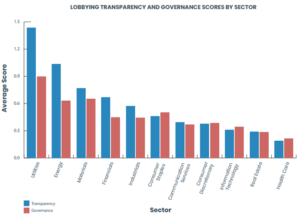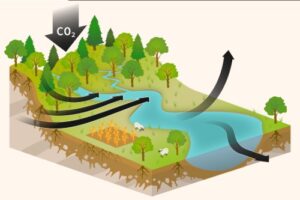Dairy can cut methane by 80%, the shady world of lobbying and carbon emitting rivers
In this issue:
Tech giants lagging in reporting
We see many news stories about how the world’s tech giants are looking to secure clean energy for their burgeoning data centres. And while many of these stories are presented in a positive light, it seems on balance, the tech sector is not maintaining a good standard of emissions reporting. The International Telecommunication Union (ITU) and the World Benchmarking Alliance (WBA) have analysed the emissions, electricity use and climate targets of 200 digital companies and found 96% are not providing customers and investors with quality data. Only eight companies scored above 90% in the report’s assessment of climate data disclosure, target-setting and performance, although on the positive side, this is up from three in the previous year’s report. 164 companies reported their electricity use with 23 of these using 100% renewables for their power. The 164 had aggregated demand of 581TWh (roughly 2.1% of global demand) with half of that being consumed by just 10 companies.
The shady world of lobbying
Climate lobbying activities are, more often than not, omitted from corporate reporting. That’s the finding of an analysis of 250,000 annual reports from 8,500 listed companies by Danu Insight. 78% of the companies provided no information about climate lobbying activities and only 6% scored well across each of the areas of transparency, lobbying mechanisms and outcomes sought. Interestingly, companies operating in areas of high exposure to climate risk tended to be those who provide more information on lobbying activities, that group including Toyota and BP.
Dairy sector can cut methane by 80%
That’s the conclusion of a trial conducted on a California dairy farm in Tulare County, the highest milk production county in the US. Scientists from the University of California, Riverside, took methane measurements for a year before and after the installation of a dairy digester on the farm and found the reduction in emissions to be 80%. The digester takes the form of a tightly sealed tarpaulin over the farm’s manure ponds, under which the methane is captured for reuse. There are now 130 similar installations across California and there has to be a lesson here for NZ.
Image credit: Chelsea Preble/UC Berkeley
District heating review
District heating is highly effective and popular in a small number of countries but, strangely, has not had huge uptake in New Zealand despite our rich geothermal resources. For those interested in district heating schemes, a fresh review on integrating district heating schemes with renewable energy sources has just been published and can be found on the link.
Consolidated heating, cooling and charging
Mitsubishi Electric and Irish tech firm EVHACS have joined forces to develop the world’s first combined heat pump and EV charger. The units offer simplified installation and space savings compared with separate units and are on sale in Ireland for €4,999 (NZ$9,500).
Microgrid in a box for your home
Another innovation for the home is the “microgrid in a box” being marketed by a consortium comprising Nebula Electronics Co. (China), Ambibox (Germany) Red Earth Energy Storage (Australia). The box is claimed to be an integrated hardware and energy management system that combines solar, storage and bidirectional EV charging of both vehicle to grid and vehicle to home. The developers claim users could see a reduction in energy costs of up to 60%.
Sports carbon calculator launched
A new carbon calculator and methodology aimed specifically at sporting organisations and claimed to be consistent with the UNFCCC’s Sports for Climate Action Framework has just been launched by Think Beyond (UK and US). 35 organisations have already signed up including World Athletics, Liverpool FC, LIV Golf, Cricket Australia, the FA (UK) and the LTA. Access to the methodology is free, pricing for the calculator starts at £600 (NZ$1,350) a year.
Mining, sequestering microbes
Scientists at Cornell University have been working with microbes that could deliver a cleaner way to extract rare earth metals and have discovered they can also accelerate natural sequestration. The Gluconobacter oxydans (G. oxydans) bacterium dissolves rocks to extract the minerals but also leaves the rocks better conditioned to absorb CO2 from the atmosphere.
England mandating solar on new builds
In an update to a story from a few weeks ago, the UK Government has now confirmed solar installations will be mandated on new-build homes across England from 2027. While exceptions will be allowed under certain, specified circumstances, it’s thought the mandate will apply to 99% of new homes and, on average, will come with a £440 (NZ$990) a year energy saving.
Did you know …..
Rivers are carbon emitters? Bristol University researchers have uncovered that ancient carbon, sequestered in soil thousands of years ago, finds its way back into the flow and is emitted from the surface of the rivers. Emissions from this ancient carbon exceeds that from short turnaround emissions. The research has implications for the understanding of the carbon cycle and the team concluded plants and soil actually sequester around a gigatonne more CO2 per year than was previously thought.



